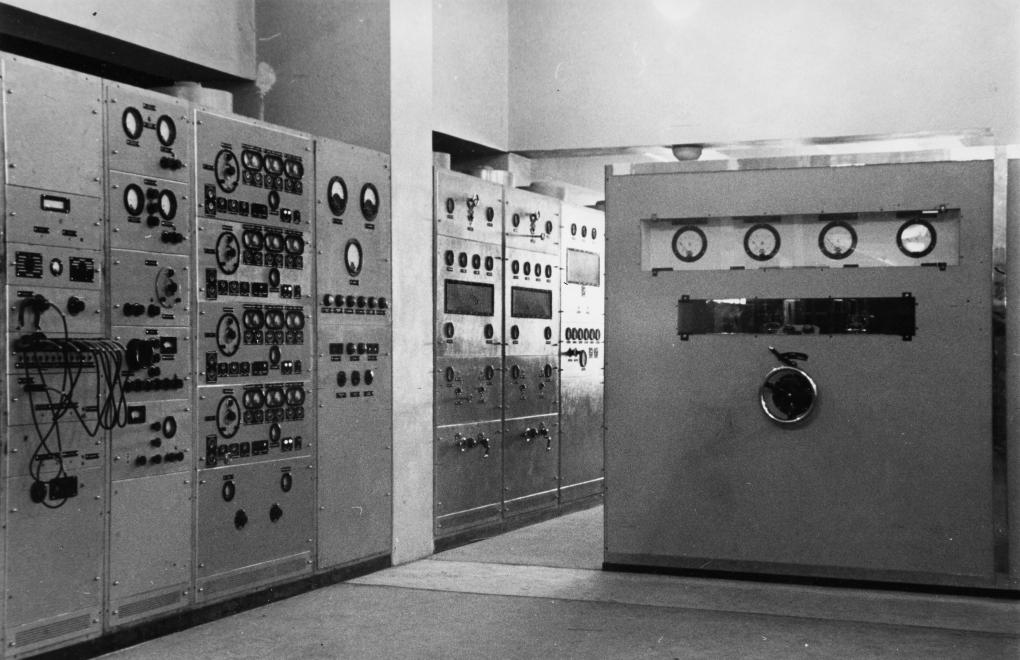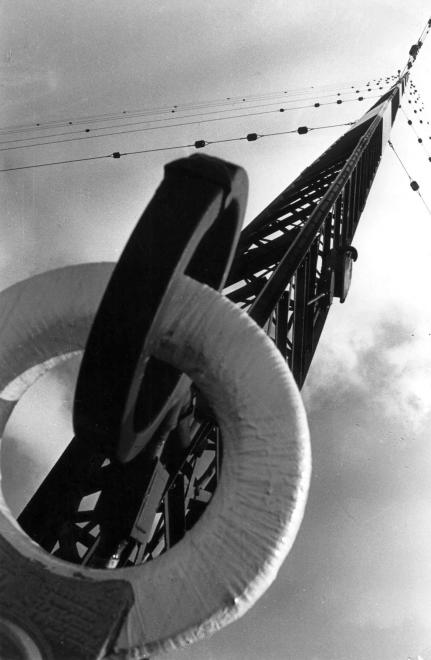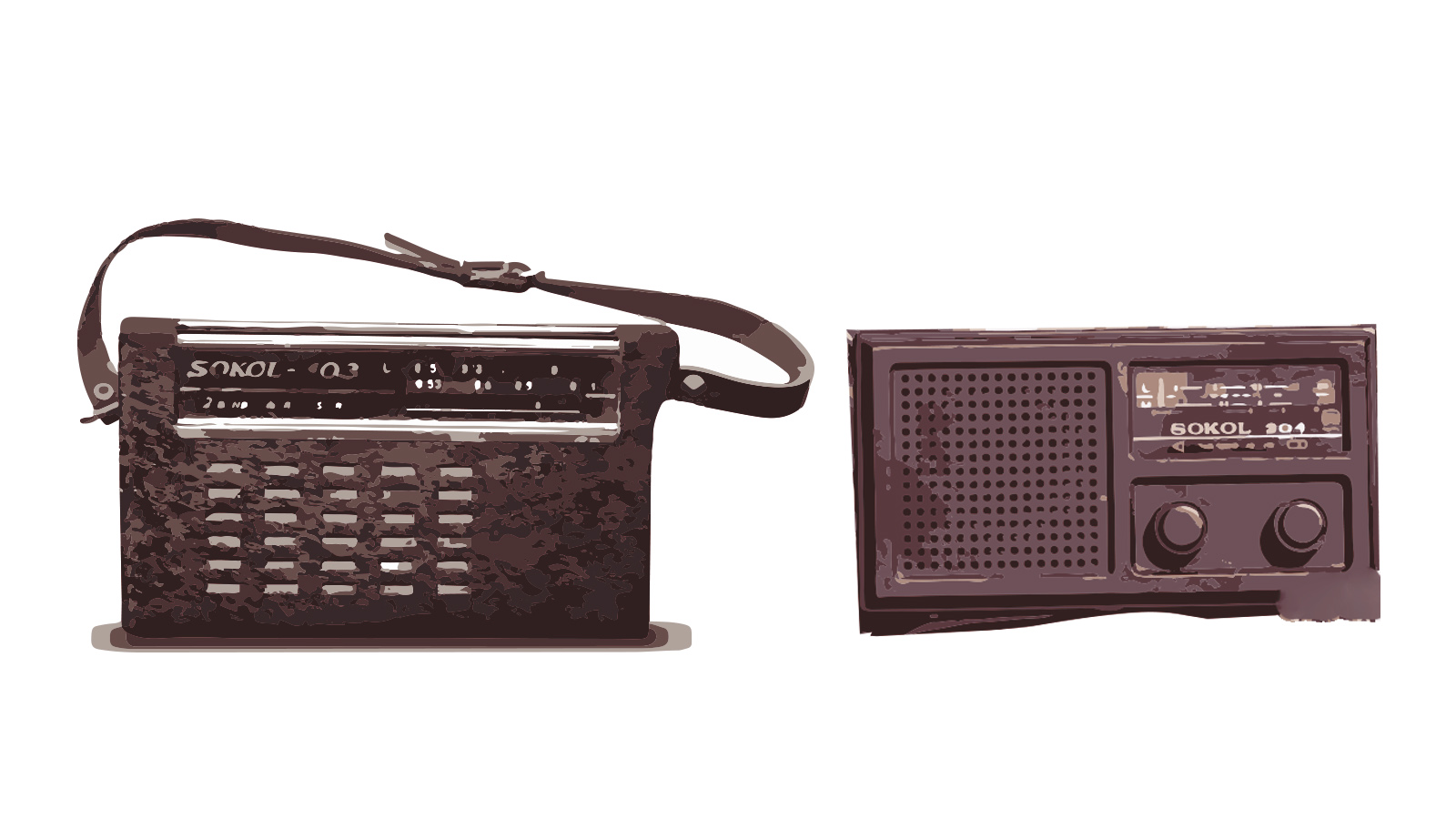
Expectations, standards, and requirements in higher education vary from country to country. In the third episode of the Knowledgeable Youth podcast Ukrainian students embark on the complex subject of tertiary education.
Since censorship in state socialist Poland was more lenient than in other countries of the Eastern Bloc, a peculiar counterpublicity was formed between samizdat, émigré publishing and western radio stations which amplified the voice of dissent.
I first got involved in dissident activity with a group of friends in high school during the early 1960s. During my studies at Warsaw University, my engagement with the movement grew. However it was all rather innocent then – mostly discussions about the past, present and the future, and some attempts to unnerve communist activists during public meetings at the university by asking awkward questions on issues such as the Katyń massacre or the exploitation of Poland by the Soviet Union. It was innocent until Jacek Kuroń and Karol Modzelewski were imprisoned for three years in 1965. After that, our group – built around Adam Michnik – started to be harassed by the secret police. To protest against oppression and censorship, we organised student demonstrations at the University of Warsaw in March 1968 that soon engulfed almost all Polish universities, medical schools and polytechnic institutes. Many young workers joined in as well.
The communist authorities responded with mass imprisonment, and antisemitic and anti-intellectual propaganda. I avoided arrest that March and went on to participate in the organisation of protests against the August 1968 invasion of Czechoslovakia by the Warsaw Pact (which included Polish troops). Only then was I imprisoned, as was my future wife, Nina. My brother, Aleksander, had been behind bars since the previous March. The witch-hunts resulted in the imprisonment of thousands of students and workers. Many were fired from their jobs and hundreds received prison sentences. Some 15,000 Polish Jews emigrated. This was the fate I chose, as well as the fate of my wife and brother.

Radio engine room. Photo from Fortepan.
We wound up in Sweden and continued our studies in Uppsala. With my brother in Paris and a group of friends outside Poland, we slowly but surely took up a form of activism familiar to the Polish émigrés for the last few hundred years: namely, publishing. We set up a political quarterly entitled Aneks and later went on to publish books. It was not about belles lettres, it was about political thinking, and about finding an answer to the basic question asked by Jacek Kuroń: ‘What can be done in a situation where one cannot do much?’
What started in Sweden as a small publishing operation by a group of friends grew considerably, especially when I found myself working for the BBC in London after 1975. Annually, we smuggled thousands of copies of the Aneks quarterly and books we printed ourselves into Poland. We also used our channels to help other émigré publishers. As the Polish democratic opposition grew after 1976, mainly in the form of the Workers Defence Committee (KOR), we became its closest partner, supporter and ambassador.
Under communism there were different types of samizdat or underground publishing. On one level, there were writers like Aleksandr Solzhenitsyn, Andrei Sinyavsky and many others in the Soviet Union who wrote simply because they could not stand the oppression. These free thinkers – writers, journalists, essayists and poets – wanted to express themselves despite, or against, the system. They felt, without much optimism, that they could save their sanity and souls by writing, whatever happened to their bodies. The second level of samizdat, which took place in Poland throughout communism, took the form of intellectual-cum-political resistance. Most of the time, it was limited to small and often isolated groups of friends – mostly students – who trusted each other.
Finally, the third level of samizdat was related to various forms of resistance and political mobilisation of the opposition on a genuinely massive scale. This is largely a unique Polish phenomenon linked to KOR (1976-1980), later to the Solidarność trade union (1980-1981) and finally to eight years of the Solidarność movement’s underground struggle following the imposition of martial law in December 13th in 1981. Since 1976, independent underground publishing grew in Poland, reaching a truly industrial level. For example, the Warsaw-based Tygodnik Mazowsze printed 80,000 copies per week in the 1980s. And this was just one of many. Between 1,000 and 5,000 copies of books were printed of every title.
This level of publishing was instrumental in helping independent public opinion to mature, strengthening the cohesion of the Solidarność movement, preserving the authority of Lech Wałęsa and other underground leaders. It also served as one of the instruments of the bloodless transformation of Poland in 1988 and 1989.
In 1964 I was in Moscow and saw, with my own eyes, the production of samizdat literature: the typing and re-typing of some literary books by a group of young, paid collaborators. I was amazed because we did not do such things. Samizdat was known since the late 1940s in Poland, but it functioned on the margins of independent intellectual circles; it only became an important part of the opposition movement after 1976. The explanation is that Poland was a relatively freer country – those not involved in open political opposition could travel to the West. Thousands of Polish intellectuals, tourists or sailors smuggled back anything in print of importance, particularly the Paris-based monthly Kultura and books published under the same roof of the Instytut Literacki (Institut Littéraire), but also Polish magazines and books from London, Rome and New York.
If someone was determined to publish, he or she preferred to smuggle it into the West and get it published there (tamizdat). Polish tamizdat was significant, as some of our most important writers and poets lived in the West and published in Paris or London – Witold Gombrowicz, Czesław Miłosz and Gustaw Herling-Grudziński, just to mention a few.
Also, while describing Polish tamizdat, one needs to take generational differences into consideration. On the one hand, you had the London-based Polish government-in-exile, and many political, social and cultural organisations that represented the traditional Polish émigrés loyal to the pre-war state structures. The fact is not only did they not have much contact with what was happening in Poland, they often refused to keep in touch with the members of the opposition, fearing that anything and everything was controlled by the secret police and ultimately the KGB. Most of them believed this to be an obvious truth until 1976.
Since 1947 Jerzy Giedroyc and his small, dedicated team in Paris published a very influential monthly called Kultura. As different from many war-time émigrés, they re-thought the post-war reality and managed to open themselves to new ideas and thus better understood the social, economic and political changes taking place in Poland. Kultura – to loud protests from very many émigrés – accepted Poland’s post-war borders and reached out to the Russians, Ukrainians and Lithuanians. Several special issues of Kultura were published in Russian and Ukrainian and were met with enthusiasm within the USSR.
We all considered ourselves to be pupils of Kultura and there was a close co-operation and trust between Kultura and us at Aneks. We organised and co-ordinated assistance for the opposition in Poland, and exchanged texts. Very often, an article or a book would arrive in London with a note asking us to send it to Kultura, Radio Free Europe, Russkaia Mysl, Kontinent or Listy. But there were also some important differences between us. It is not just that we, the young Turks, wanted to have our own impact. When Jerzy Giedroyc established Kultura, he rightly believed that the road to freedom would take a long time. And since intellectual and political life in Poland was highly censored and regulated, with the secret police always in the background, Giedroyc attempted to assume the role of an intellectual-cum-political leader with Kultura as his main weapon.
We never did this and saw ourselves as an intrinsic part of the opposition. It is not by chance that the title of our magazine was modestly called Aneks – Annex to the Censored Press in Poland. We always felt that the objective of our effort in the West was to help the opposition in Poland, and later in Czechoslovakia, Hungary and elsewhere.
In various ways, we helped readers formulate their own ideas, based on the most important intellectual and political trends in the West. We believed this might – someday – lead to action, but we knew that action risked reprisal and imprisonment. We were safe in the West. To us, publishers of tamizdat, the most important medium was always samizdat and the people who produced it – the members of the democratic opposition.
On the other hand, in the 1980s in London – with Jan Kavan (later Czech Foreign Minister) and with George Schöpflin (now a Hungarian MEP) – I published an English-language quarterly The East European Reporter which aimed to inform westerners and the growing independent public opinion in our countries about the current developments.
Censorship in Poland was a bit more relaxed than in other communist states. It is a known fact that, in the 1950s and 1960s, many people in the USSR learnt Polish, read Polish books and magazines because there they could find western authors that were banned in their own countries. In Poland the atmosphere was a bit less strict and, with the exception of those blacklisted, one could publish officially if the content was not openly anti-communist. There were several heavily censored but immensely popular Catholic publications, such as Tygodnik Powszechny, Więź or Znak for which many non-Catholic authors also wrote.
This is why the Polish samizdat was a rather rare phenomenon. Most Polish writers preferred to compromise and negotiate required changes with the censors in order to get something officially published. They often accepted, with a heavy heart, the censored version and only when something was rejected would it be sent abroad to be published in London or Paris – often using a penname.
The situation changed in 1976 when KOR (and later other groups) spawned the underground publishing movement. In 1977, among the many political publications, the independent literary quarterly Zapis appeared – the first issue left the editing table with eight copies, subsequently typed and retyped many times over. After two years, it was already distributed with around 1,000 copies, properly printed.
The importance of Zapis lies in the fact that a group of intellectuals said: ‘Enough is enough – we want to publish our works uncensored.’ The existence of an uncensored literary magazine gave writers, poets and essayists a choice, and many decided, for the first time in their lives, to write and publish uninhibited, putting their names out in the open. For the first time since 1945, they would not be jailed, only harassed and banned from official literary or academic life. We in the West would find money and help them financially.

Radio free Europe antenna in Portugal. Photo from Fortepan
For the samizdat–tamizdat–samizdat interrelation, Zapis became an excellent example. We initiated co-operation with the magazine Index on Censorship which agreed to use its imprint for the edition published discreetly by Aneks. Out of the 2,000 copies of every issue of Zapis, printed in fully professional form, we would smuggle around 1,500 copies into Poland. And then some people, often far away from Warsaw, would reprint a London edition.
Our own operation was similar. We would print 2,000 copies of Aneks Quarterly and smuggle 1,500 copies into Poland. Every issue and every book would be reprinted in the underground. We reprinted some underground magazines and books in London. Aneks publishers reprinted all issues of two quarterlies: the left-of-centre Krytyka and the more conservative Res Publica. This is how tamizdat was intimately intertwined with samizdat.
There is a pertinent question which needs to be answered here: at what point did independent publishing activity influence public opinion to support the opposition – namely, the Workers Defence Committee (KOR) in Poland, Charter 77 in Czechoslovakia, and the intellectual opposition in Hungary?
This depended very much on the nature of the regime in question, the level of repression, as well as the international context. In Poland, the determining factors were the 1975 Helsinki Agreement that provided the basis for the demands to respect human and civil rights; the organised action of KOR and other organisations between 1976 and 1980; the enormous loans the Edward Gierek regime took out in the West that made it more vulnerable to western pressure and kept it on a relatively liberal course; and the massive scale of the activities of the Solidarność trade union (1980-1989).
The role of KOR was particularly significant as it not only defended oppressed and imprisoned workers, students and intellectuals, but because it fought for free speech. Consequently, its great achievement was that, during the Gdańsk shipyard strikes in August 1980, the workers, supported by KOR activists, demanded not just higher wages but the creation of the independent trade union and freedom of expression. This was a point of no return.
However, the circle of hope would have been incomplete without a third very important actor that reinforced both samizdat and tamizdat. These were the western radio stations, the intertwined broadcasting activity of Radio Free Europe/Radio Liberty, the BBC, and, to a lesser extent, the Voice of America and Radio France International.
We did not only produce daily news programmes but read out on air verbatim individual articles and essays, whole novels or historical handbooks which reached a massive audience in Poland and in other Soviet-dominated countries. Every broadcast was repeated several times over the course of a week. The importance of this cannot be overstated – such co-operation meant that the articles published as samizdat or tamizdat reached tens of thousands of readers and millions of listeners on the other side of the Iron Curtain.
What is important here is that Radio Free Europe and the BBC paid quite generous author’s fees which were then sent by us to the authors back in Poland, eventually helping them remain independent from the authorities. What I called the Circle of Hope was complete. It was a very dynamic process, in which one part influenced the other two: samizdat-tamizdat-radio-samizdat-tamizdat-radio…

The iconic Sokol radios. Illustration by Merve Akyel.
Summing up, I left Poland in 1970 with no hope that things would ever change for the better. Who would dare think back then that Soviet communism could implode with just a little outside help? However, in time we became aware that anything we could do to help feed the cycle, to make the Circle of Hope work, would help push back Soviet communism, and make it disappear. And so it did. Good riddance.
Eugeniusz Smolar is a member of Eurozine partner journal New Eastern Europe’s editorial board.
Published 21 June 2019
Original in English
First published by New Eastern Europe 3-4/2019
Contributed by New Eastern Europe © Eugeniusz Smolar / New Eastern Europe / Eurozine
PDF/PRINTSubscribe to know what’s worth thinking about.

Expectations, standards, and requirements in higher education vary from country to country. In the third episode of the Knowledgeable Youth podcast Ukrainian students embark on the complex subject of tertiary education.

The crux of different peoples’ history, and of humanity as a whole, is always food and hunger. In the final analysis, it’s the stomach that counts.